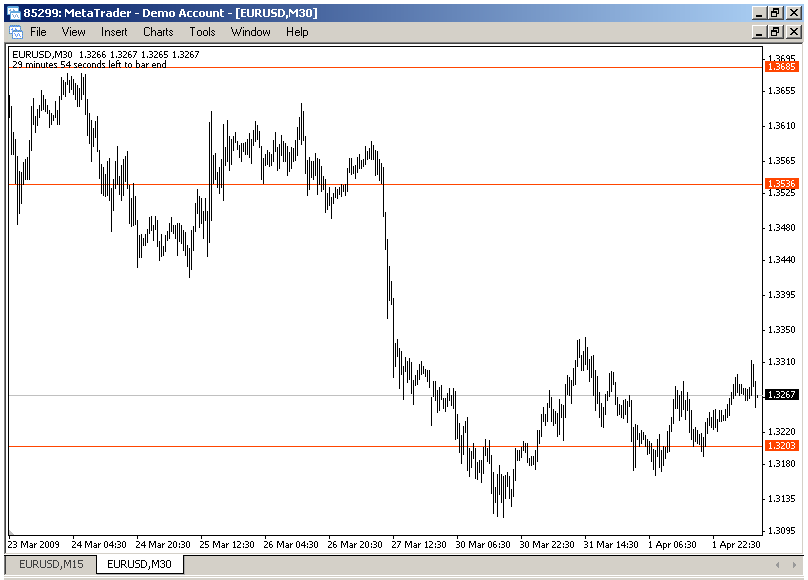Relative Strength Index (RSI) explained and trading strategy MQL Forex Coders
Post on: 16 Июнь, 2015 No Comment

Jan13
2012 3A%2F%2F1.gravatar.com%2Favatar%2Fad516503a11cd5ca435acc9bb6523536%3Fs%3D30&r=G /% Written by Forex Coder
RSI is a very wide used momentum indicator designed by Welles Wilder. Common settings for RSI are 14 for its Period parameter. Initially this indicator was used in the stock market like any other great indicators then after a while it became very popular for Forex market as well some of the great traders also use RSI indicator and analysis to predict the s&p 500 movement .
Relative Strength Index (RSI) measures the strength of all upward movement against the strength of all downward movement in a specified time frame. It provides results in form of percentages from the difference of upward and downward movements
RSI = 100 [100/(1+RS)]
RS = Average of N Bars up closes / average of N Bars down closes
It is one of the most popular oscillators that works well in range-bound market.
What RSI Charts Reveal?
There are 3 main levels to look after when trading with RSI:
• Level 50 when the indicator value is above 50 level then we have a confirmed bullish (up)trend, when the indicator value is below 50 level then we have a confirmed bearish (down)trend
• Level 70 when the indicator value is above 70 level it gives you a signal that the market is overbought. Here you need to take in consideration the following if the indicator value comes from level 50 and breakes level 70 then this is an indication that the market is really bullish and it starts to become overbought. As soon as the indicator drops below level 70 we can say that the market could reverse quite soon or already started.
• Level 30 when the indicator value is below 30 level it gives you a signal that the market is oversold. Here you need to take in consideration the following if the indicator value comes from level 50 and brakes level 30 then this is an indication that the market is really bearish and it starts to become oversold. As soon as the indicator rises back above level 30 we can say that the market could reverse quite soon or already started.
RSI also can show you the main trend just by having trendiness drawn on itself. Also this indicator is very used by many traders to spot the divergence and to trade market reversals, especially when the indicators values is in the overbought or oversold areas
If RSI is in Overbought area this is an indication that the market becomes Overbought and soon we could have a Sell signal. All we need to so is to wait for the RSI to break below level 70 and enter a sell trade. The same is for Buy signals. We wait for RSI to go below level 30 and as soon as price comes back from level 30 we enter a buy order. Also you can use trend-lines on indicator to spot divergence at those levels for best entries.
Now, individually this can be used on any time-frames, but as we all know we should use at least 2,3 indicators together to get the best signals possible. If you want to use only RSI you can do that definitely, but we offer you a nice strategy.
In order to get better signals from RSI we can use 2 RSI Periods to get buy and sell signals. We use the standard RSI 14 as our main line and lets use RSI 3 or RSI 5 as our signal line which will tell us when to enter the market and when not to. We enter the trade only at the open of the new candle to make sure the RSI made its move.
Buy Signal
If both the Signal Line and the main line are above level 50 we look for a buy signal as soon as the signal line crosses above main RSI 14 line. Stop Loss will be below closest swing low point and take profit 3 times bigger then the SL. After each trade we will monitor it and see if we need some adjustments to trade.
Sell Signal
If both the Signal Line and the main line are above level 50 we look for a buy signal as soon as the signal line crosses above main RSI 14 line. Stop Loss will be below closest swing low point and take profit 3 times bigger then the SL. After each trade we will monitor it and see if we need some adjustments to trade.
Below you have an image of the potential Buy and Sell signals and their results using RSI 4 as a signal line and RSI 14 as main one.
Money Management
Since we have here 1:3 risk reward ratio we can deduct that we need at least 25% of profitable signals in order to be in break even, and in order to be in profit some extra profit orders. I would say if we have 3 out of 10 profitable orders then we are happy and by time gathering more experience we can increase that to 5 out of 10 and we are doing great.
CodeForex.com team is working on an Trading Assistant which will give you pop ups to enter a trade or not based on the above strategy. It will be available to all of our readers for free just make sure you are registered on our website.
By the way what do you think of having a histogram which will indicate the difference between signal and main RSI lines?
We wish you good luck in trying this strategy and share with us your results
You must agree to our Risk Disclosure before trying this strategy on your own.














